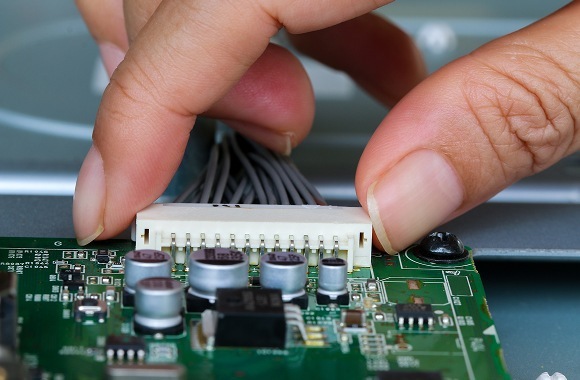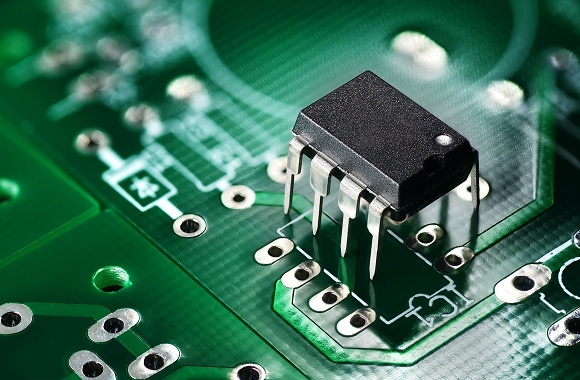Through-Hole Assembly

Through-hole assembly, also known as conventional assembly, remains a crucial method for manufacturing electronic circuits, particularly for components that require enhanced mechanical strength. Unlike Surface Mount Technology (SMT), which relies on soldering components onto the surface of a PCB, through-hole assembly involves inserting component leads into pre-drilled holes and soldering them in place. This technique provides a more secure mechanical connection, making it ideal for applications subjected to stress, vibration, or high power loads.
At DSL, we recognise the importance of through-hole assembly in producing reliable and long-lasting electronic products. Whether for aerospace, industrial, or automotive applications, we ensure precise through-hole component placement and soldering.
Our skilled technicians and advanced manufacturing techniques guarantee that each component is properly positioned and securely bonded to the PCB. This meticulous approach enhances the durability and stability of the final product, ensuring it can withstand demanding operating conditions.
Why Clients Choose DSL
DSL’s exceptional client feedback stems from our commitment to quality, innovation, and tailored customer service. Our team’s expertise and dedication ensure reliable electronic manufacturing solutions that meet specific client needs. We prioritise effective communication and support, fostering lasting relationships by delivering consistently high-quality and timely products.
Quality and Innovation
Customised Solutions
Reliable Communication
Customised Solutions

Contact us today
Speak to one of our knowledgeable and experienced team.
Why Through-Hole Assembly?
- Heavy Components: Large capacitors, transformers, and power regulators that require strong adhesion to the PCB.
- Connectors and Switches: Components subjected to mechanical stress that must be securely anchored.
- High-Reliability Applications: Aerospace, industrial, and automotive electronics where durability is paramount.


Methods of Through-Hole Assembly
There are multiple approaches to assembling through-hole components onto a PCB, each with distinct advantages:
- Manual Assembly: Skilled technicians place and solder components by hand, ensuring precision for complex builds.
- Wave Soldering: A highly efficient automated method where PCBs pass over a molten solder wave, soldering all through-hole components simultaneously.
- Selective Soldering: Used for mixed-technology PCBs, applying solder only where needed, preventing damage to sensitive SMT components.
Each method is chosen based on project requirements, ensuring a balance of cost, precision, and efficiency.
Beyond soldering, most through-hole components require additional preparation and finishing:- Lead Forming: Some components must be shaped before insertion to fit specific PCB layouts.
- Trimming: After soldering, protruding component leads are trimmed to ensure a clean and professional finish.
- Inspection and Testing: Each assembly undergoes rigorous quality checks to verify electrical and mechanical integrity.
Why Choose DSL for Through-Hole Assembly?
- Expertise in manual and automated through-hole soldering.
- Customised solutions tailored to your design and performance needs.
- High-reliability manufacturing processes for demanding applications.
Through-hole assembly remains a trusted method for applications requiring durability and strength. By combining expert craftsmanship with advanced manufacturing techniques, DSL ensures that your PCB assembly meets the highest industry standards.
Whether you need small-batch prototyping or large-scale production, DSL provides reliable through-hole assembly solutions. Contact us today to discuss your requirements and find out how we can support your electronic manufacturing needs.
